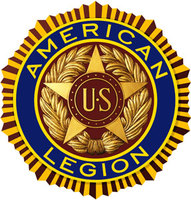 | Back to e-WV
| Back to e-WV
 The West Virginia Encyclopedia
The West Virginia Encyclopedia
 | Back to e-WV
| Back to e-WV
 The West Virginia Encyclopedia
The West Virginia Encyclopedia

The American Legion was founded in Paris by members of the American Expeditionary Force in March, 1919. It is composed of men and women who were members of the armed forces of the United States, serving honorably in active duty during times of war. The Department of West Virginia began after World War I, at a meeting held in Charleston on May 2, 1919, and was perfected at a convention in Charleston on October 15–16, 1919. In 2023 it had 112 active posts in the state and a membership of about 10,744. Permanent headquarters are maintained in Charleston with the department adjutant in charge. The official department publication, West Virginia Legionnaire, established in April 1925, was published for many years and edited by the department adjutant.
A women’s affiliate, the American Legion Auxiliary, Department of West Virginia, was organized at Grafton on July 20–21, 1922. The charter was signed September 29, 1922. At the time of organization there were 14 units with a total membership of 1,011. There are now nearly 5,000 members in 58 West Virginia units. Wives, husbands, mothers, sisters, daughters, granddaughters, great-granddaughters, grandmothers, and steprelatives of Legion members or deceased veterans are eligible to join the Auxiliary. Women veterans may join the Auxiliary, as well as the Legion itself. The principal work of the Auxiliary is for veterans’ welfare in hospitals, veteran homes, or for other veterans and veterans’ families with special needs. It also publishes a monthly newsletter, The Auxiliary Spirit.
Both organizations have programs for youth, including Boys’ State, Rhododendron Girls State, King-for-a-Day, scholarship programs, and American flag programs. Both the Legion and the Auxiliary are active in legislation for veterans and in encouraging respect for the flag. The Auxiliary has an annual distribution of poppies, made by veterans in hospitals, in exchange for donations to be used for the welfare of veterans.
Written by Eileen Cain Stanley